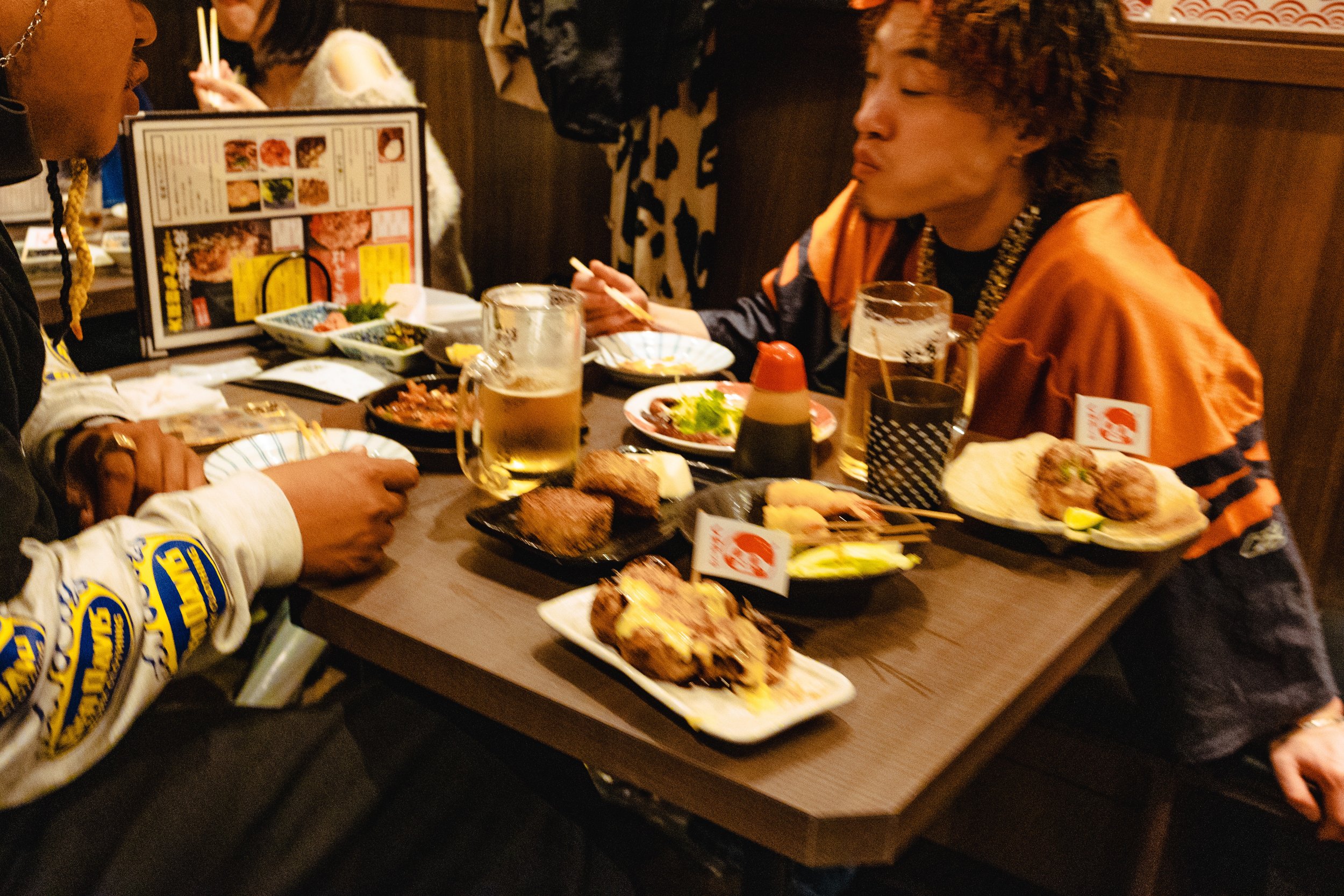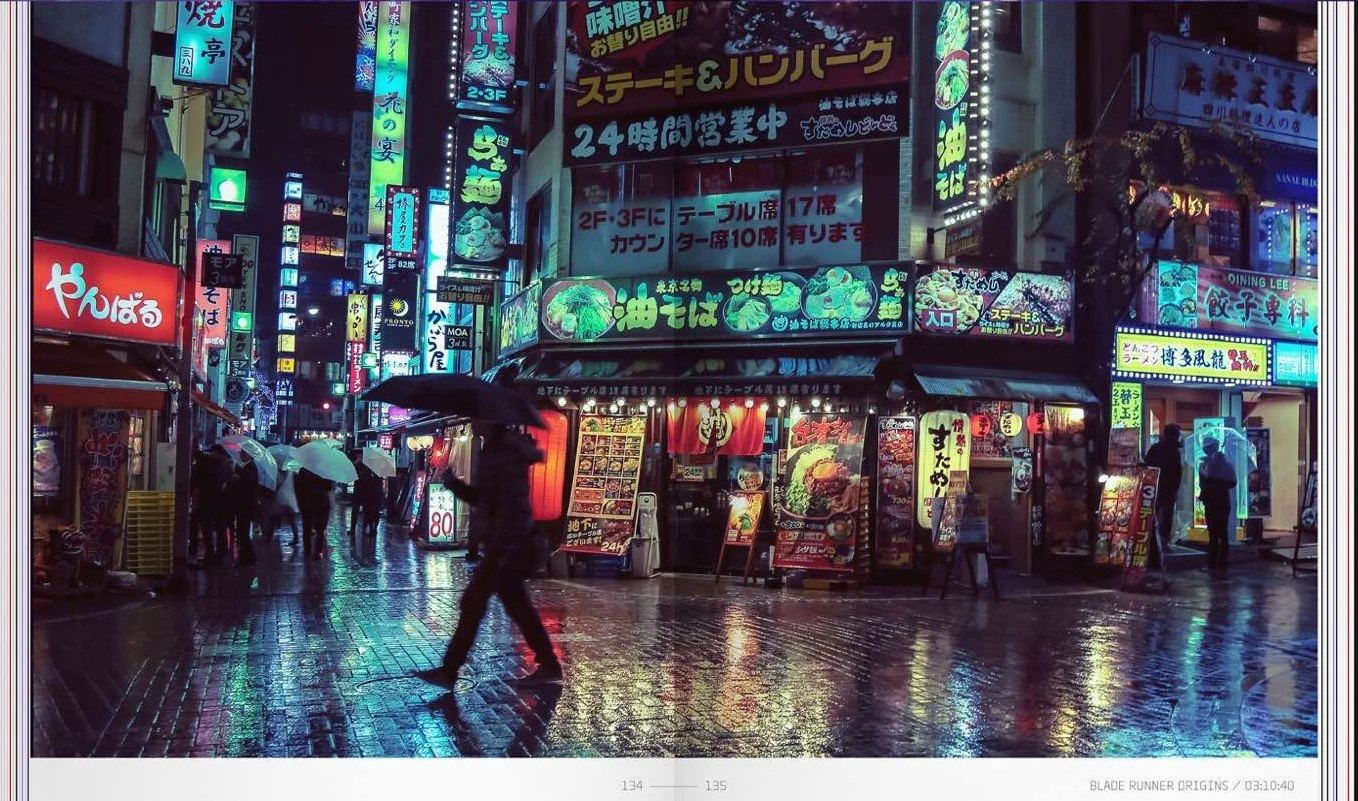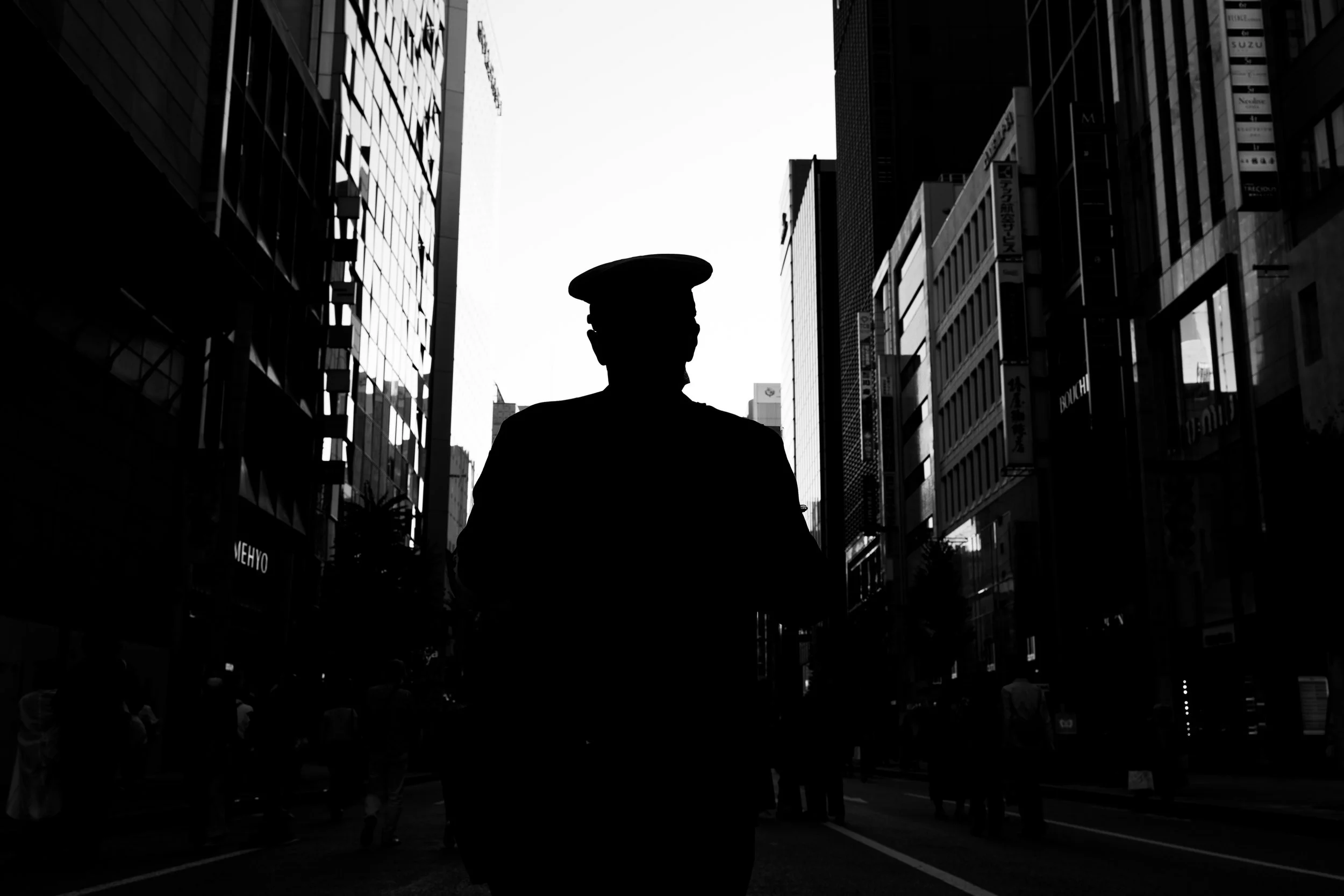Tokyo Guide: Things to Do, Neighborhoods to Stay In, and How to Master Street Photography
Just as Jakarta overtakes Tokyo as the world’s most popoulos city, I find myself writing about Japan’s capital.
Tokyo, a city where ancient traditions beautifully clash with what once was futuristic innovation, is still an endless source of inspiration for street photographers, even after the classic neon lights have been removed in favor of more modern leds. From its bustling Shibuya scramble to tranquil temple grounds, every corner offers a unique visual story waiting to be captured. Whether you're a tourist, a seasoned street photographer or an art enthusiast seeking visual feasts, Tokyo will deliver an unforgettable journey.
I’ve been to Tokyo a number of times, spending months there, and this article will present you some of the research I did before going and then what I discovered while on location in the hope of giving you not only a clear idea of what to expect there, both in terms of photography and as a visitor, but also (hopefully) useful tips to make the most of your visit of Tokyo.
I’ve also collected some feedback from friends that have recently visited or that have been living there for a long time.
What to See and Do in Tokyo
Different type of workers in Akihabara.
A quick, and by no means comprehensive, list of the main hot spots. I could add to this list forever but my guess is if you’re here you’re either into street photography and\or this is one of your first visit to Tokyo. If that’s the case this list is already plenty long, if it’s not the case, this city is so dynamic and huge that there can be no list, you have to explore and research based on your wants and needs.
Central Tokyo
Tsukiji Outer Market - Market for fresh seafood and produce. It’s not all about fish so there’s something for everyone. Go early in the morning to avoid some of the crowds.
Koishikawa Korakuen - Landscape garden next to the Tokyo Dome. The admission costs around 2€.
Imperial Palace - The main residence of the emperor of Japan. It is a large park-like area located in the Chiyoda district.
Roppongi - Multifaceted district, popular for night drinks. One of the two Hard Rock Cafes of Tokyo is here.
Yurikamome - It’s a train line, fully automated. Also called “the robot train”.
Ginza - It’s the richest part of town with all the luxury brands having shops there. On weekends the main drag Chuo Dori becomes a pedestrian promenade, very nice to enjoy a walk and the sunset.
Link to the main street of Ginza on Google Maps
Shinbashi - An area rich with izakayas and restaurants, it’s very popular among salarymen after work.
Northern Tokyo
Tokyo Skytree - A 634 meter tall tower (it’s the world's tallest freestanding broadcasting tower) with observation decks.
Asakusa - District with an atmosphere of old Tokyo. Famous for its temples and kimonos.
Tokyo water bus - A network of pleasant sightseeing boat lines. Most of them depart from Asakusa Pier.
Rikugien - Beautiful Japanese style landscape garden. Admission fee is about 2€.
Yanaka - District with a pleasant atmosphere of old Tokyo. Definitely a lot less touristy than the main areas.
Ueno - Lively market area both indoors and outdoors that also has a huge park.
Akihabara - District for electronic and otaku (manga, anime, and video games) goods. At night it changes into a maid cafe and tuned cars area.
Ikebukuro - Like Akihabara, Ikebukuro is also a center of otaku culture. Ikebukuro caters more to a female clientele with butler cafes and anime, manga and cosplay related shops.
Western Tokyo
Shibuya - The place needs no introduction. Lively both day and night, you can find just about anything there.
Shibuya Crossing - A must see, probably the most famous crossing in the world.
Shibuya Sky - An observation deck with light games and a bar. Book in advance as the tickets sell out days in advance.
Official Website if this doesn’t work you can find tickets for almost the same price on Klook.
Shinjuku
Golden Gai - A Shinjuku institution for over half a century; it’s a collection of tiny bars.
Kabukicho - It’s difficult to sum it up in a couple of lines, I would say it’s an entertainment district known for adult-oriented nightlife.
Harajuku - Center of teenage fashion and cosplay culture, you’ll also find some street art and quirky vintage clothing stores.
Find Harajuku on Maps
Nakano - Popular among tourists and locals alike for its Nakano Broadway where you’ll find stores for anime & comics, boutiques, gift shops and just about anything really, especially old stuff.
Shimokitazawa - A mix of old and new, definitely a hip place with neighborhood-wide flea markets for clothes taking place over the weekend.
Southern Tokyo
Odaiba - It’s a high-tech entertainment hub built on an artificial island. On a good day you can enjoy views of Mt Fuji but you’ll also find robots and the Miraikan science museum.
Toyosu Market - It’s famous for the tuna auctions but it also offers eateries and a few shops.
Tokyo Tower
teamLab Borderless - Immersive museum with dynamic, futuristic, digital art installations. 100% reccommended! Book in advance as tickets tend to sell out.
teamLab Planets - Hard to describe, maybe a modern art 4D museum? Book in advance as tickets sell out pretty early.
Did I miss a place you love or forgot something? Feel free to get in touch!
Where to Stay
View from the stairs leading to my accomodation in Okubo
If you’re visiting for the first time and\or you’r staying only for a short period of time (say less than 10 days), I would definitely go for something in Shinjuku or Okubo (which is still technically Shinjuku but a little cheaper) as they are central and well connected.
For longer stays or if you’re on a budget areas like Nakano, Sugamo or anything on the Yamanote train line is ok.
This being said my absolute favorite is Okubo, also known as “Korean Town” as it’s in walking distance of Kabukicho and Golden Gai, has plenty of good food options and it’s lively but not chaotic.
Where to Eat
This place (in Shibuya) didn’t make the list as the food and drinks were average but it was a lot of fun (everyone, servers included, was drunk).
A.k.a.: restaurants I’ve been and liked enough to reccommend.
Let’s start with a handful of favorites:
Mazesoba: Menya Kokoro
Dessert: PANAME Crêpes de Paris
Korean: DAOL
Curry: Curry Bondy
Sushi and seafood: Tsukiji Outer Market
Yakiniku: Futago
All other places -> See the entire list on Google Maps.
Iconic Photography Books Capturing Tokyo's Essence
Let’s get some inspiration from the greats that did it before us, exploring the works of masters who have dedicated their lenses to the city. These books offer diverse perspectives, from gritty street scenes to poetic urban landscapes.
I’ll add links to purchase the books on Amazon, if you buy through these links Amazon will credit me a commission at no extra cost for you. It’s a small way to support my work, thank you in advance.
TO:KY:OO by Liam Wong
TO:KY:OO by Liam Wong
My absolute favorite is famous for presenting Tokyo as a real-life "cyberpunk" setting. Wong, who is an award-winning video game art director, applies his designer's eye to photography, emphasizing bold, saturated colors, dramatic lighting, and deep shadows to create a cinematic, almost futuristic mood. The vast majority of the images are taken late at night, often after midnight (a reference reflected in the title, which resembles a digital clock readout), when the city in a quieter, more mysterious state.
Can’t reccommend it enough!
Tokyo by Daido Moriyama
A quintessential work by one of Japan's most influential photographers. Moriyama's raw, grainy, black-and-white images capture the darker, more chaotic, and often unsettling beauty of Tokyo's back alleys, nightlife, and anonymous crowds. His "are-bure-boke" (grainy, blurry, out-of-focus) aesthetic perfectly encapsulates the frantic energy of the city.
Silent Contemplation by Masataka Nakano
In stark contrast to Moriyama, Nakano presents a serene and often melancholic view of Tokyo. He photographs the city at night, often devoid of people, focusing on the subtle interplay of light, shadow, and architectural forms. His images reveal a quiet, introspective side of a city usually known for its ceaseless activity.
Tokyo Gents by Andy Gotts
A more recent and unique take, this book captures the distinctive style and personality of Tokyo's impeccably dressed men. Gotts' portraits offer a glimpse into the city's fashion-forward culture and the individuality found amidst the urban throng.
Tokyo Compression by Michael Wolf
This powerful series captures the claustrophobic reality of rush hour on Tokyo's subway system. Wolf's unflinching close-up portraits of commuters pressed against the train windows are both disturbing and deeply human, revealing the intense daily experience of millions.
Shinjuku by Nobuyoshi Araki
Another titan of Japanese photography, Araki's "Shinjuku" offers his characteristic provocative and intimate gaze at one of Tokyo's most vibrant districts. His work often blurs the lines between art and life, documenting everything from everyday scenes to more personal and daring subjects.
My Top-5 (and One) Favourite Street Photography Spots
Tokyo's vibrant streets are a living, breathing canvas, it’s hard to go wrong anywhere in any light conditions but here are some of my favorite locations.
Shibuya
The famous Shibuya Scramble.
No discussion of Tokyo street photography is complete without the iconic Shibuya Scramble. Witnessing thousands of people crossing from all directions simultaneously is a truly mesmerizing spectacle. For a top-down perspective, head to the Starbucks on the second floor of the Tsutaya building or the Magnet by Shibuya 109 rooftop observation deck. Capture the organized chaos, the flashing billboards, and the sheer energy of urban life.
This is my go-to place when the weather is sunny as you can easily shoot juxtappositions, reflections and gestures. It’s great at night as well but not as great as the next place on the list.
Shinjuku: Golden Gai & Kabukicho
Golden Gai
Dive into the neon-lit labyrinth of Shinjuku!
Golden Gai, with its tiny, atmospheric bars packed into narrow alleys, offers a glimpse into old Tokyo and incredible low-light opportunities. Just a stone's throw away, Kabukicho, Tokyo's famous entertainment district, buzzes with vibrant signs, towering buildings, and a unique nocturnal energy. From drunks to salarymen and solicitors, nights here will present you the most interesting characters.
Be aware that all night entertainment places are controlled by the Yakuza which employs people on the street (very easy to spot) that aren’t generally happy to be photographed. I ran into some trouble a few times.
Harajuku (Takeshita Street, Cat Street)
Tokyu Plaza mirrors.
Experience the epicenter of Tokyo's youth culture and fashion. Takeshita Street is a riot of colors, quirky boutiques, and fashion-forward individuals. It's a fantastic spot for capturing unique street style and energetic crowds. For a slightly more relaxed vibe, explore Cat Street, connecting Harajuku and Shibuya (it’s just a 20 minutes walk between the two), known for its trendy boutiques, cafes, and a more bohemian feel. Impossible to miss are also the two Tokyu Plaza buildings with their rooftop gardens, mirrors and escalators.
Ginza
Policeman in Ginza
Experience Tokyo's upscale side in Ginza. This district boasts luxury boutiques, elegant department stores, and impressive modern architecture. The wide boulevards and sophisticated atmosphere provide a different kind of street photography opportunity, focusing on reflections, clean lines, and the city's refined aesthetic.
During the weekend the main street becomes a pedestrian promenade and the light is often great. If you explore around a bit you can also find buildings and areas with incredible light and reflections like the Tokyo International Forum Glass Building (you’re welcome).
Shimokitazawa
Sunset near the train station in Shimokitazawa.
Shimokitazawa is often described as Tokyo's "Greenwich Village," an epicenter of youth culture that attracts a liberal and somewhat bohemian crowd. This draws in a diverse range of people and distinctive personal styles, which are excellent subjects for street portraiture and candid lifestyle shots. In addition to this, Shimokitazawa's human-scale streets and thriving counter-culture atmosphere combine to offer an environment rich in detail and authentic, candid moments, making it a prime location for street photography.
Go for the second hand clothes markets and the hip schene and stay for the magical light of the sunset, especially around the train station.
Bonus place: teamLab Borderless
Interactive art inside teamLab Borderless
Definitely recommended wether you’re into photography or not, it’s quite the experience and if you’re into abstract photography it can be a dream come true!. Book well in advance as the tickets regularly sell out.
Galleries and Museums for Photographic Inspiration
Beyond the streets, Tokyo is home to world-class museums and galleries that can inspire and educate any photographer.
Tokyo Photographic Art Museum (“TOP” Museum)
As Japan's only comprehensive museum dedicated to photography and moving images, the TOP Museum is an absolute must-visit. It houses an extensive collection of both Japanese and international photography, showcasing everything from historical works to contemporary experimental pieces. Their rotating exhibitions are always thought-provoking.
The National Art Center
While not exclusively a photography museum, NACT is a stunning architectural marvel in itself, making it a photographic subject. It hosts a diverse range of exhibitions, often including significant photographic works and installations from various periods and artists. Its unique wave-like glass facade is a dream for architectural photographers.
Mori Art Museum
Located on the 53rd floor of the Roppongi Hills Mori Tower, this contemporary art museum not only presents cutting-edge exhibitions (often featuring photography and multimedia art) but also offers breathtaking panoramic views of Tokyo. The city sprawling beneath you, especially at sunset or night, is a magnificent photographic opportunity in itself.
SCAI The Bathhouse
Housed in a 200-year-old public bathhouse in Yanaka, this contemporary art gallery offers a unique blend of historical architecture and modern art. It often features works by internationally acclaimed artists, including photographers, in a truly distinctive setting.
Fujifilm Square
Located in Tokyo Midtown, Fujifilm Square is more than just a showroom. It features a gallery space showcasing impressive photographic works, often from award-winning photographers, alongside the latest camera technology.
It's a great spot to see high-quality prints and get inspired by what's possible with modern equipment
The complete list
Click here to see a list with more photography museums and galleries on GMaps. This list has been put together based on places I visited and reccomendations from other photographers. Of these I want to especially thank Luca (@atarashiiruka) for his patience, dedication and friendship.
A List of Interesting Shops
When I’m not in a rush and I see or visit a shop that interests me or that has nice things\souvenirs, I save it to Google Maps. From second hand clothing to Mini 4WD there’s a bit of everything.
This is the list: https://maps.app.goo.gl/ezvCGRDTqF9YUuP8A which of course it’s a work in progress.
Going to the Gym in Tokyo
If you’re like me and you’re travelling for a long time, you might want to visit a gym to keep in shape. The problem is private gyms are incredibly expensive in Japan when it comes to day passes and a subscription is impossible without having a Japanese phone number (and often a Japanese credit card). Luckily there are (at least) a couple of public gyms that are easy to get into and cheap! The best one I’ve found is the Tokyo Metropolitan Gymnasium. Once you get in, head left for the ticket machines to get your entry ticket. At the moment of writing this the gym pass costs ¥700 and it’s valid for 3 hours.
Tips for Enjoying Tokyo
People on a train in Tokyo
So, you’re heading to Tokyo! You are probably picturing neon lights, bullet trains, and robots serving coffee. And you’re not wrong—Japan can be incredibly futuristic. But here is the plot twist: Tokyo, and all of Japan, is also deeply traditional. It runs on a set of "unspoken rules" that can baffle first-time visitors. If you want to avoid awkward stares and travel like a pro, here is the lowdown on the things most foreigners don't know until they arrive.
By the way, this list applies to all Japan, not just Tokyo.
Transportation card (ICOCA, PASMO, SUICA)
It’s confusing that there are multiple providers and you might think they work differently but any card will work in 99.9% of the trains in Japan. Which one you get is just a matter of where you’re getting it but there are no real differences. I do recommend getting one though as it makes getting in and out of the trains smoother.
If you have an Iphone you can just add a card to the wallet, just select “Transportation card” and then search for Suica or Pasmo (maybe even ICOCA although I’m not sure about this one). If you don’t have an Iphone you can get a physical card. I only have experience with the ICOCA one but I’m pretty sure buying the others will be a similar or same experience. You can buy an ICOCA card at JR West Japan stations or some convenience stores. When purchasing a new ICOCA card, a one-time payment of 2000 yen is required. Of this, 500 yen serves as a deposit, and the remaining 1500 yen automatically becomes the card’s balance.
The only issue is that these cards can be bought and topped up only with cash which brings us to the next point on the list.
Cash is King
Despite Japan's high-tech image, it is still a predominantly cash-based society for many day-to-day transactions. This usually is the biggest shock for most travelers. Despite being a high-tech capital, Japan is still a cash-based society. While department stores and major hotels take cards, the "real" Tokyo operates on physical Yen.
Where you need cash: Small restaurants (especially ramen shops with ticket vending machines), temples and shrines, traditional inns, and street food stalls.
The golden rule: Always carry between ¥10000 and ¥20000 in your wallet. Don't worry about safety; robbery is virtually non-existent here.
The coin pro tip: You are going to end up with a mountain of coins. If you pay cash in any convenience store insert all the coins you have and any change that you’ll get will be in the form of the bigger sized coins available.
Getting cash: If you run out of cash, head to a 7-Eleven, Lawson, or FamilyMart. Their ATMs almost always accept foreign cards, whereas many bank ATMs do not.
The "Money Tray" Ritual
Although is not that frowned upon, especially when you clearly are a tourist, when you do pay for something, never hand your cash or credit card directly to the cashier. Look for a small plastic or metal tray next to the register. Place your money or card in the tray. The cashier will pick it up, process the payment, and place your change and receipt back in the tray for you to collect.
Tipping
This is a hard habit to break for Americans, but do not tip in Japan. Excellent service is considered the standard, not an extra you pay for. If you leave money on the table, the waiter will likely chase you down the street, thinking you forgot it. It creates confusion rather than gratitude. A simple "Arigato gozaimasu" (Thank you very much) is the best tip you can give.
The Trash Can Scavenger Hunt
You will walk down pristine streets and notice something odd: there is no trash anywhere, but there are also no trash cans.
In typical Japanese fashion, due to security measures from the 90s, public bins are rare (almost non-existent) so you must carry your trash with you but you can find bins in almost any convenience store and bottles-only bins next to most vending machines.
Eating on the Go
In many Western cities, walking while eating a bagel or drinking coffee is normal. In Japan, it is considered sloppy manners. If you buy street food or a drink from a vending machine, the polite thing to do is stop, stand still (often near the shop/machine), consume it, and then keep moving.
Train Etiquette
Japanese trains are pretty silent and phone talk is discouraged (there are even signs in some trains) so never talk on the phone and keep your phone on silent.
If the train is even slightly crowded, swing your backpack around and wear it on your front. This prevents you from smacking people behind you when you turn.
Taxi Doors
This catches everyone off guard. When you hail a taxi, do not reach for the door handle. The rear passenger door is automatic and controlled by the driver. If you try to yank it open or slam it shut, you might break the mechanism or upset the driver. Just stand back and let the door do the work.
Shoe Logic and "Toilet Slippers"
You likely know you need to take your shoes off at temples, traditional inns (ryokan), and some restaurants.
If you are in a place where you have taken off your shoes, you will often find a pair of plastic slippers inside the restroom. These are for the toilet area only. The most embarrassing mistake a foreigner can make is walking back to their dinner table still wearing the toilet slippers. Check your feet before you leave the bathroom!
Driving in Japan
Although I don’t recommend driving in Tokyo, you might want to drive to explore the rural areas and the nature outside the main cities. In that case you’ll likely need an international driving permit along with a valid driver’s license from your home country. An IDP is a document containing an official translation of your national driving licence. Make sure to get yours before arriving in Japan, as it isn’t possible to apply for an IDP upon arrival. Japan only accepts the IDP based on the 1949 Geneva Convention.
Getting a SIM (or eSim) card
There are a boatload of options for SIM cards or eSims. The easiest way to get a SIM card is probably to do it at the airport upon arrival. There are a lot of counters that offer the service and in a matter of minutes they will install the SIM on your phone and you’ll be ready to go. My go-to choice though is the eSim as I find it more convenient and I can search for the best option while comfortably sitting on my couch. Websites like Klook offer lots and lots of options, I tried every cheap one and although they work, the speed is really slow. The best one I tried so far is Mobal which is both cheap and has a fast-enough network.
















